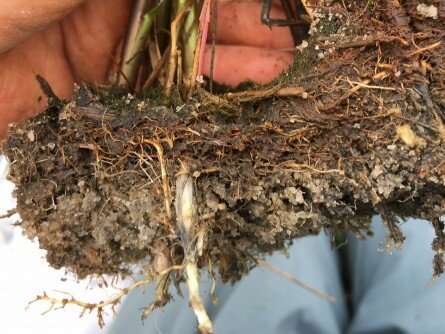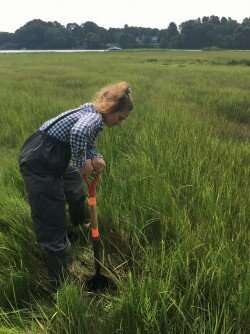How do tidal marshes store carbon?

Tidal marshes are wetlands that are covered with incoming tidal water twice a day. These marshes may be as small as narrow fringe along a tidal creek or miles across in estuaries with adjacent flat landscapes. There are nearly 40 million acres of tidal marshes along the Atlantic, Gulf, and Pacific shores of the U.S. The Soil Science Society of America's (SSSA) January 1st "Soils Matter" blog explores how tidal marshes store carbon and why they are an important part of surrounding landscapes
Tidal marshes are also common in many estuaries such as the Chesapeake Bay and along rivers that enter these coastal estuaries. Tidal marshes are some of the most productive ecosystems on the planet. They are an important part of the landscapes because they provide flood protection, erosion control, wildlife food and habitat, water quality support, and many other benefits.
Comparative to forest soils (that hold about 65% of the carbon held in a forest, with the rest of the carbon stored in plant life), tidal marshes store three to five times that amount in the soil.

But why do tidal marshes store so much more carbon? According to Dr. Mark Stolt of University of Rhode Island, there are two major factors—the plant life and the soil conditions. His study was published earlier this year in the Soil Science Society of America Journal.
Marsh grasses and shrubs are drenched with full sunlight and the soils are rich in nutrients. This results in prolific plant growth above the ground. There is also growth below the ground in the form of roots and rhizomes. Marsh plants thrive in saturated conditions.

Tidal waters that flood marshes bring in organic matter via sediment that is suspended in the flooding waters. That carbon-rich sediment is trapped by the marsh grasses. It settles to the bottom becoming part of the marsh peat.
With twice-daily flooding, the soils are constantly under water, or saturated. Because the soil is under water, soil microbial activity is inhibited by the limited amount of oxygen. Without oxygen, soil microbes can't decompose organic matter as well as oxygen-rich environments. This is the big reason why tidal marshes can accumulate much more carbon than forest soils.
To read the entire blog please visit: https://soilsmatter.wordpress.com/2023/01/01/how-do-tidal-marshes-store-carbon/
More information: Mark Stolt et al, Carbon sequestration in back‐barrier tidal marsh soils, Soil Science Society of America Journal (2022). DOI: 10.1002/saj2.20437
Journal information: Soil Science Society of America Journal
Provided by American Society of Agronomy Half of U.S. tidal marsh areas vulnerable to rising seas
No comments:
Post a Comment